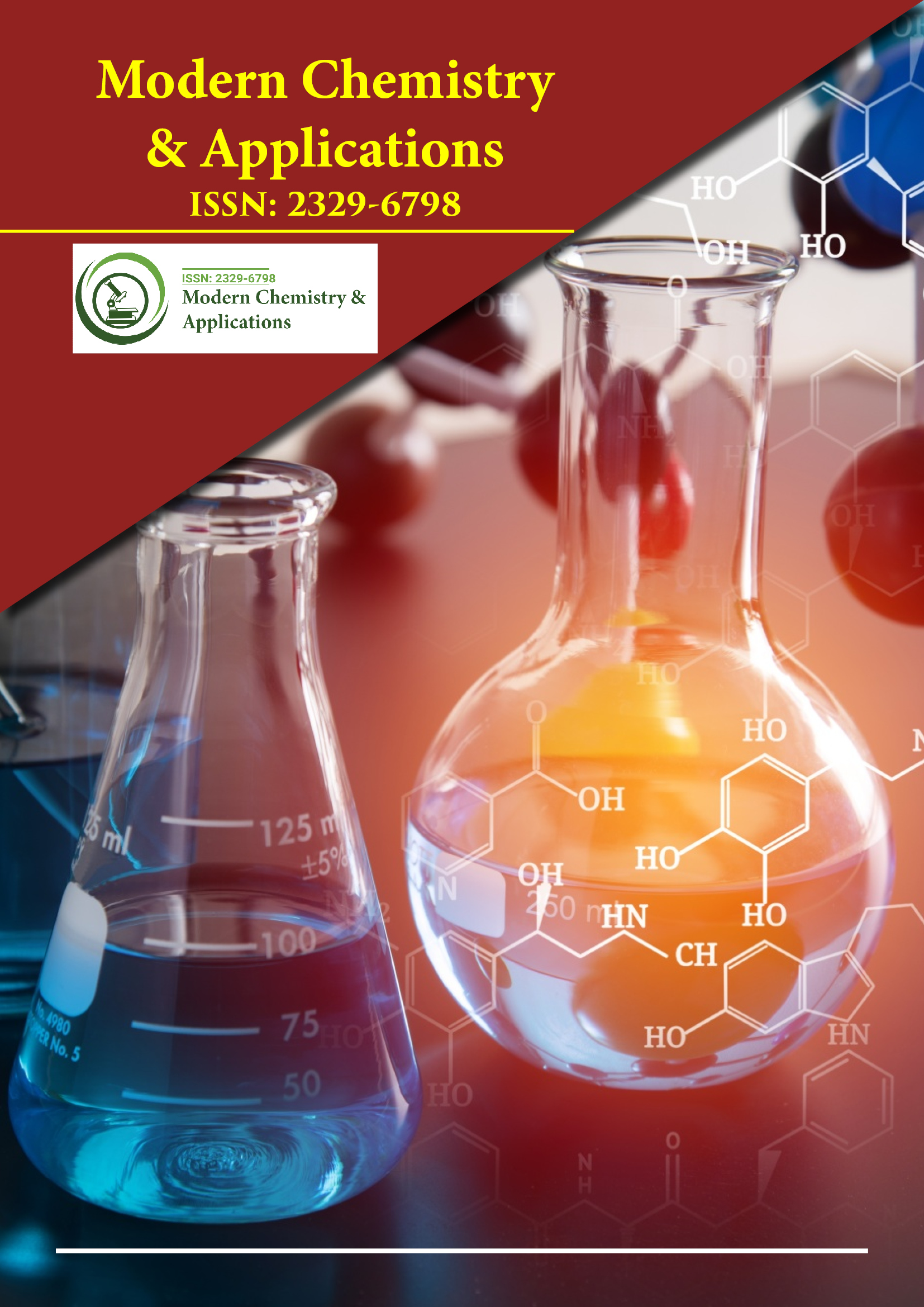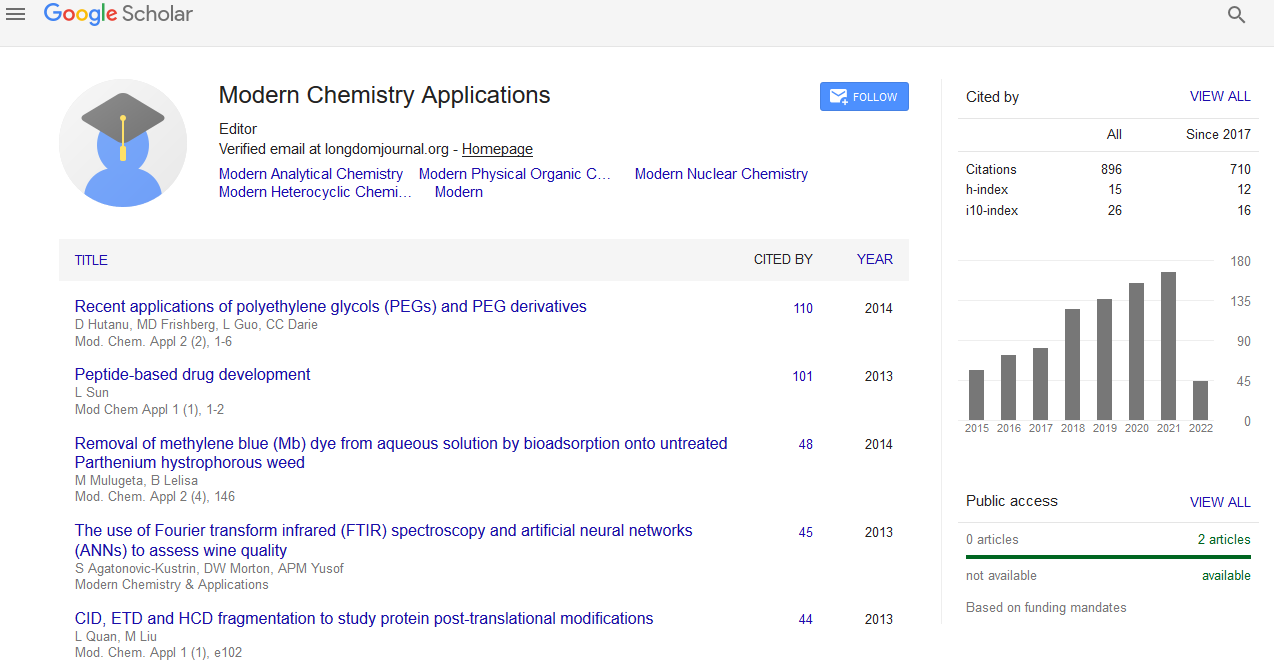Indexed In
- Open J Gate
- JournalTOCs
- RefSeek
- Hamdard University
- EBSCO A-Z
- OCLC- WorldCat
- Scholarsteer
- Publons
- Geneva Foundation for Medical Education and Research
- Google Scholar
Useful Links
Share This Page
Journal Flyer

Open Access Journals
- Agri and Aquaculture
- Biochemistry
- Bioinformatics & Systems Biology
- Business & Management
- Chemistry
- Clinical Sciences
- Engineering
- Food & Nutrition
- General Science
- Genetics & Molecular Biology
- Immunology & Microbiology
- Medical Sciences
- Neuroscience & Psychology
- Nursing & Health Care
- Pharmaceutical Sciences
Main products of echinochrome A oxidative degradation
5th Global Chemistry Congress
September 04-06, 2017 | London, UK
Elena A Vasileva, Natalia P Mishchenko and Sergey A Fedoreyev
G.B. Elyakov Pacific Institute of Bioorganic Chemistry, Russia
Posters & Accepted Abstracts: Mod Chem Appl
Abstract:
In the last decade appeared a large number of publications on the therapeutic effectiveness of echinochrome A and drug preparations based on it, and that arouse the interest in the whole world to search and investigate biologically active quinonoid pigments of sea urchins. Therefore, the study of the chemical properties of echinochrome A, in particular the stability of its solutions, is an urgent task for modern pharmaceuticals. To investigate stability of echinochrome A in aqueous solutions, 200 mg of it was diluted 50-fold with distilled water saturated with atmospheric oxygen (pH 7.2), and was vigorously stirred at room temperature for 48 hours. Echinochrome A was removed from the reaction mixture by extraction with chloroform, its oxidation products were extracted with ethyl acetate and chromatographed on a Toyopearl HW-40 gel in a solvent system 20-50% EtOH containing 0.3% HCOOH. As a result, 7-ethyl-2,2,3,3,5,6,8-heptahydroxy-2,3-dihydro-1,4-naphthoquinone, 2-(carboxycarbonyl)-4-ethyl-3,5,6-trihydroxybenzoic acid, echinolactone A (7-ethyl-5,6-dihydroxy-2,3-dioxo-2,3- dihydrobenzofuran-4-carboxylic acid), 4-ethyl-3,5,6-trihydroxyphthalic acid and 4-ethyl-2-formyl-3,5,6-trihydroxybenzoic acid were isolated. The structures of compounds 2, 3, 5, 6 were established using high-resolution mass spectrometry (HR-ESIMS) and NMR, and of compound 4â??using X-ray crystallography.
Biography :
Elena A Vasileva is a Junior Researcher in the Laboratory of Chemistry of Natural Quinonoid Compounds at G. B. Elyakov Pacific Institute of Bioorganic Chemistry, Vladivostok, Russia. She has an experience in identification, isolation and structure elucidation of natural quinonoid compounds from plants, their cell cultures and sea urchins.


